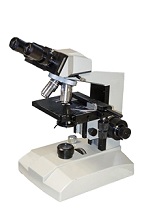Scientists Sweep Cells Apart for Use in Medical Research
“The process gives us very fine control over the particles we’re working with. The cells are held by acoustic waves, and we can then pick out the useful cells by moving the waves that hold the cells.” –Dr. Anne Bernassau.

Scientists have developed a new method to separate cells, which could lead to more efficient medical research.
In a new paper published recently, University of Glasgow researchers outline how they have used moving acoustic waves to very gently separate clinically useful cells from cellular debris.
In the process of isolating cells from tissues at one stage the cells need to be separated from cellular debris and other irrelevant material. Currently, the processes used for separation are inefficient, meaning useful cells which have been expensively harvested can be lost alongside the debris.
The new process, which the researchers have named ‘Dynamic acoustic field activated cell separation’ or DAFACS, has proven to be much more efficient, recovering up to 100% of useful cells from samples.
DAFACS uses moving acoustic waves which can be tuned to separate cells of different sizes from each other, allowing large cells to be easily swept free of smaller ones, or debris.
The research was led by Dr. Anne Bernassau of the University of Glasgow’s School of Engineering and Dr. Mathis Riehle of the Institute of Molecular, Cell and Systems Biology.
Dr. Bernassau said: “The process gives us very fine control over the particles we’re working with. The cells are held by acoustic waves, and we can then pick out the useful cells by moving the waves that hold the cells.”
“The entire system cost us a few thousand pounds (1000 GBP = $1517.96 US), which is considerably less than the tens of thousands needed for the most affordable cell sorting systems currently available. It can also be easily scaled up to allow many more cells to be separated than we have done in the lab so far.”
Dr. Riehle said: “Our method allows for a very gentle separation because we apply exceedingly small forces - the sound waves we use are of similar strength to the ones applied in medical ultrasound imaging. This process of very gently massaging the cells apart with acoustic waves leaves them in excellent condition for medical research.”
“We tune the acoustic waves so that small cells and debris are left behind, while the much larger nerve cells we work with drift along with the moving waves. Watching the process at work through a microscope, you can see how the nerve cells are swept gently past the debris, which is held firmly in place.”
Illustration: Microscope clipart.
Read more…
University of Glasgow News Release (12/22/14)
PhysOrg (12/23/14)
e! Science News (12/23/14)
Abstract (Lab on a Chip; (12/04/14))
In a new paper published recently, University of Glasgow researchers outline how they have used moving acoustic waves to very gently separate clinically useful cells from cellular debris.
In the process of isolating cells from tissues at one stage the cells need to be separated from cellular debris and other irrelevant material. Currently, the processes used for separation are inefficient, meaning useful cells which have been expensively harvested can be lost alongside the debris.
The new process, which the researchers have named ‘Dynamic acoustic field activated cell separation’ or DAFACS, has proven to be much more efficient, recovering up to 100% of useful cells from samples.
DAFACS uses moving acoustic waves which can be tuned to separate cells of different sizes from each other, allowing large cells to be easily swept free of smaller ones, or debris.
The research was led by Dr. Anne Bernassau of the University of Glasgow’s School of Engineering and Dr. Mathis Riehle of the Institute of Molecular, Cell and Systems Biology.
Dr. Bernassau said: “The process gives us very fine control over the particles we’re working with. The cells are held by acoustic waves, and we can then pick out the useful cells by moving the waves that hold the cells.”
“The entire system cost us a few thousand pounds (1000 GBP = $1517.96 US), which is considerably less than the tens of thousands needed for the most affordable cell sorting systems currently available. It can also be easily scaled up to allow many more cells to be separated than we have done in the lab so far.”
Dr. Riehle said: “Our method allows for a very gentle separation because we apply exceedingly small forces - the sound waves we use are of similar strength to the ones applied in medical ultrasound imaging. This process of very gently massaging the cells apart with acoustic waves leaves them in excellent condition for medical research.”
“We tune the acoustic waves so that small cells and debris are left behind, while the much larger nerve cells we work with drift along with the moving waves. Watching the process at work through a microscope, you can see how the nerve cells are swept gently past the debris, which is held firmly in place.”
Illustration: Microscope clipart.
Read more…
University of Glasgow News Release (12/22/14)
PhysOrg (12/23/14)
e! Science News (12/23/14)
Abstract (Lab on a Chip; (12/04/14))
